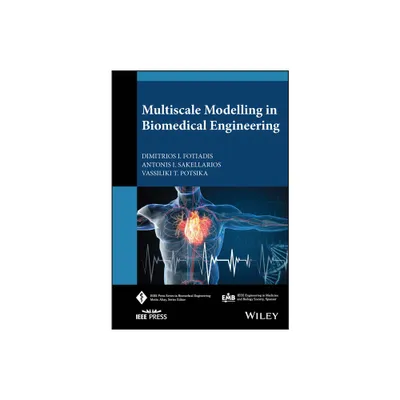Home
Physiology, Biophysics, and Biomedical Engineering / Edition 1
Loading Inventory...
Barnes and Noble
Physiology, Biophysics, and Biomedical Engineering / Edition 1
Current price: $115.00


Barnes and Noble
Physiology, Biophysics, and Biomedical Engineering / Edition 1
Current price: $115.00
Loading Inventory...
Size: OS
*Product Information may vary - to confirm product availability, pricing, and additional information please contact Barnes and Noble
Physiology, Biophysics and Biomedical Engineering
provides a multidisciplinary understanding of biological phenomena and the instrumentation for monitoring these phenomena. It covers the physical phenomena of electricity, pressure, and flow along with the adaptation of the physics of the phenomena to the special conditions and constraints of biological systems. While the text focuses on human biological systems, some of the principles also apply to plants, bacteria, and other animals.
The first section of the book presents a general introduction to physiological systems and describes specialized methods used to record electrical events from biological tissue. The next part examines molecules involved in cell transport and signaling as well as the proteins relevant in cells’ ability to contract and generate tension. The text goes on to cover the properties of the heart, blood, and circulation and the monitoring of cardiac and circulatory function. It then discusses the importance of the interrelationship of pressures and flows in organ systems, such as the lungs and kidneys, and details the organization and function of the nervous system. After focusing on the systems used to monitor signals, the book explores modeling, biomechanics, and emerging technologies, including the progressive miniaturization of sensors and actuators in biomedical engineering.
Developed from the authors’ courses in medical biophysics and biomedical instrumentation, this book shows how biophysics and biomedical engineering have advanced modern medicine. It brings together the physical principles underlying human physiological processes and the physical methods used to monitor these processes. Requiring only basic mathematical knowledge, the text supplements mathematical formulae with qualitative explanations and illustrations to encourage an intuitive grasp on the processes discussed.
provides a multidisciplinary understanding of biological phenomena and the instrumentation for monitoring these phenomena. It covers the physical phenomena of electricity, pressure, and flow along with the adaptation of the physics of the phenomena to the special conditions and constraints of biological systems. While the text focuses on human biological systems, some of the principles also apply to plants, bacteria, and other animals.
The first section of the book presents a general introduction to physiological systems and describes specialized methods used to record electrical events from biological tissue. The next part examines molecules involved in cell transport and signaling as well as the proteins relevant in cells’ ability to contract and generate tension. The text goes on to cover the properties of the heart, blood, and circulation and the monitoring of cardiac and circulatory function. It then discusses the importance of the interrelationship of pressures and flows in organ systems, such as the lungs and kidneys, and details the organization and function of the nervous system. After focusing on the systems used to monitor signals, the book explores modeling, biomechanics, and emerging technologies, including the progressive miniaturization of sensors and actuators in biomedical engineering.
Developed from the authors’ courses in medical biophysics and biomedical instrumentation, this book shows how biophysics and biomedical engineering have advanced modern medicine. It brings together the physical principles underlying human physiological processes and the physical methods used to monitor these processes. Requiring only basic mathematical knowledge, the text supplements mathematical formulae with qualitative explanations and illustrations to encourage an intuitive grasp on the processes discussed.


















